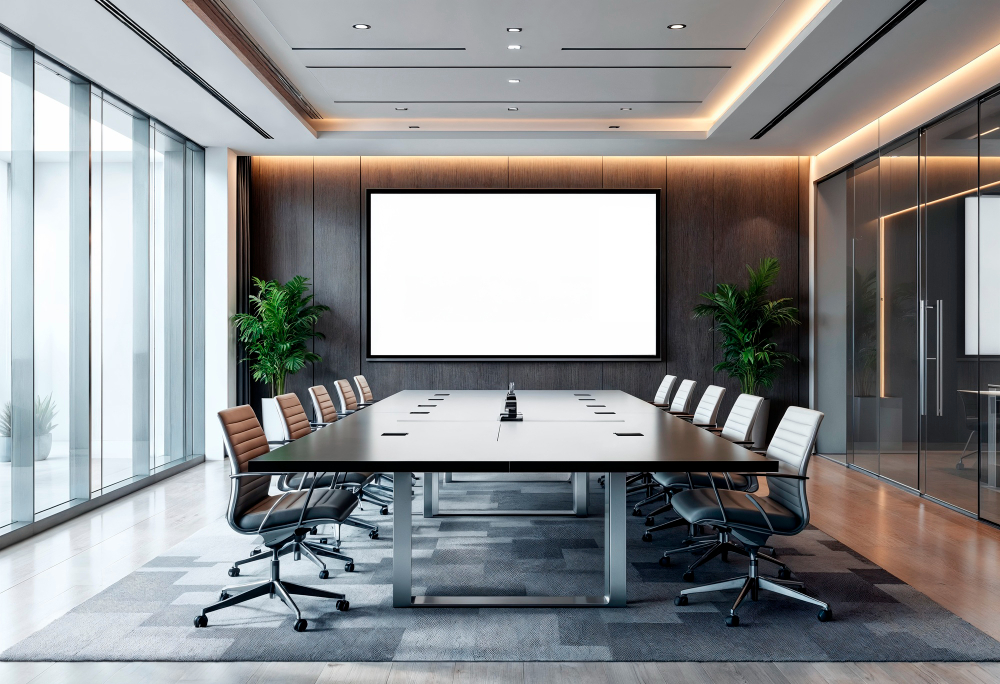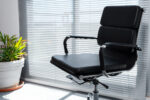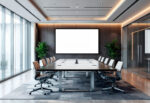
Guide for Conference Table Dimensions
We understand that finding the perfect conference table can feel impossible, especially when people need to consider aspects like matching the table size to their meeting room dimensions.
But here’s the truth: the right table choice depends not just on size, but also on the number of people, the room layout, and the type of discussions you host.
The problem is that most people only focus on design and seating capacity, while overlooking comfort and how the table fits the overall space.
As a dedicated office furniture seller, we recommend that you pay attention to conference table dimensions and its relevant angles to avoid common issues.
That’s exactly why, in the following sections, we’ll explain each factor of how size, height, and spacing can transform the comfort and efficiency of your meetings.
What are Standard Conference Table Dimensions?
When it comes to buying the right table, basically, there is no dedicated size that can fit in all spaces, but still, there are some average conference table dimensions that are recognized for comfort and efficiency, like:
- Small conference table (4-6 People)
- Medium-size table (8-10 People)
- Large boardroom tables (12+ People)
Small-Size Conference Table:
Small tables, usually 6-8 feet long and 3-4 feet wide, work well for startups or for offices that have fewer staff and space.
Medium-Size Conference Table:
Medium-sized is perfect for growing teams or mid-level offices, like a software house, and other firms where the space is slightly wide enough for face-to-face meetings.
Which measures around 10–12 feet long and 4–5 feet wide. They comfortably seat 8–10 people without crowding the room or creating any discomfort.
Large-Boardroom Conference Table:
Tables that are designed for boardrooms or big corporate meetings range from 14–20 feet in length and 4–6 feet in width.
They provide sufficient space for 12 or more people to move around or maintain their belongings, like documents, laptops, and presentations. But picking the right table based on measurements is not enough to make a place comfortable.
The size of your meeting room also plays a vital role.
A table that looks perfect in a catalog possibly overcrowd a smaller room or look too minimal in a large space.
As a rule of thumb, ensure to leave at least 3 feet of clearance around the table so people can walk, pull out chairs, and move around without feeling boxed in.
What Is the Standard Height of a Conference Table?
The standard conference table height is 28-30 inches(71-76 cm), the same as most office and dining tables. This dimension makes them compatible with standard ergonomic chairs.
Correct table dimensions and an ergonomic chair are a beneficial pair to maintain the correct posture even in long meetings.
What Is the Ideal Clearance and Spacing Around the Conference Table?
The ideal clearance and spacing in measurement are 3-4 feet (36-48 inches) around the meeting table dimensions to maintain comfort and functionality.
But a question still troubled people: Is comfort and functionality really achievable with enough spacing?
However, the answer is, yes. They are as follows:
- Comfortable movement: People can walk around without bumping into chairs.
- Chair pull-out space: Individuals can get at least 24 inches to bring out and in the chair without annoying the next person.
- Accessibility: Provides easy movement for everyone, including those with mobility needs.
- Professional look: Keeps the room balanced, open, and uncluttered.
Always remember this factor to consider the clearance when deciding to get a conference table, whether from a store or an online platform, measure the room and subtract 6–8 feet (for clearance) from both the length and width, and shop as per that detail.
This ensures your table fits perfectly without making the space feel cramped.
What Are the Different Conference Table Shapes and Their Space Needs?
Conference table dimensions not only depend on size, but their shape also has a focal point to consider for availing a comfortable space. Usual conference table shapes are: Rectangle, Boat-shaped, Oval, and Round.
Rectangle Table:
The rectangle-shaped tables for the meeting room are recognized as ideal, with sizes around 10 feet long, which means 8—10 people can easily sit and continue their conference without touching each other’s elbows.
The rectangular tables work well, especially in formal setups, where everyone needs a clear line of sight.
Boat-shaped Table:
The boat-shaped tables, often seen in law firms and real estate offices, are slightly wider in the middle. This design provides extra elbow room and better visibility during presentations.
Regarding its size, the standard size is 10 feet, which can accommodate up to eight seats. In comparison with a rectangular shape, it feels more spacious.
Oval Table:
Oval conference tables have a rounded edge shape that showcases a softer look and saves space compared to sharp-corner designs.
This table is incredible for mid-sized rooms, like software houses or marketing agencies, where collaboration and open discussions are the priority. When looking at conference table dimensions, an oval table is quite the same length as a rectangular one.
The difference is that it covers fewer people because of its curved ends. But, still, it creates a welcoming atmosphere that many businesses prefer for brainstorming sessions.
Round Table:
For smaller teams and intimate meetings, the round conference tables are the best fit, every single person has an equal visibility and voice.
However, it is designed in a way to promote and encourage a sense of equality since there’s no defined “head of the table,” making it ideal for team discussions or casual collaboration.
In terms of conference table dimensions, a standard round table can seat around 4 to 6 people comfortably, depending on its diameter and room size, while they are not workable for larger groups, unless it’s a global conference where the mics are implemented.
How Do You Choose the Right Conference Table for Your Room?
Choosing the right conference table starts with three essentials:
- Measure your room
- Allow enough clearance and walking space
- Match the table size to your seating needs
Instead of dealing with all, go for time-saving conference table dimensions like Rectangular Conference Table and Modular Training Table, which are designed to fit a variety of room sizes.
Whether you’re setting up a formal boardroom or a flexible training space, these tables are incredible to offer group connectivity, supporting space, and a prominent gap for comfortable movement.
A perfect table size for your room maintains comfort and a professional appearance during meetings.
FAQ Section:
Q1: How Do I Choose Between Wood, Laminate, and Glass Conference Tables?
Your budget, preferred style, and usage will decide, like wood meeting tables are classic, but expensive, glass shows a modern feel, but it needs consistent cleaning, just laminate sounds quite good in price and durability both.
Q2: How do I figure out the Right Conference Table Size for My Room?
Start by measuring the size of your meeting room’s length and width. Then, subtract 6—8 feet from both dimensions to allow a proper walking gap in the room. However, the remaining size will be your ideal measurements for the table.
Q3: Is Power Cable Management Possible in Conference Tables?
Yes, as the hybrid meetings become part of the work culture, laptops and projectors become essential tools. The customized conference tables have become relevant to offer built-in power modules, USB charging ports, and cable cutouts.
Q4: What’s the Difference Between a Conference Table and a Training Table?
Conference tables are designed for fixed places; however, the training tables are lightweight and easy to move, which makes them a multi-purpose table. They can be used in workshops or in classroom sessions as well.
Conclusion:
In today’s article, we understood that choosing the right conference table goes beyond design, which is not limited to picking just elegance, but now it’s about finding the right balance of dimensions, clearance, and shape to match your space and team needs.
Whether small round tables for quick huddles or large boardroom tables for executive meetings, the right fit ensures comfort, professionalism, and productivity.

 17014 S. Vermont Ave #C, Gardena, CA 90247
17014 S. Vermont Ave #C, Gardena, CA 90247 (310) 856-3456
(310) 856-3456



